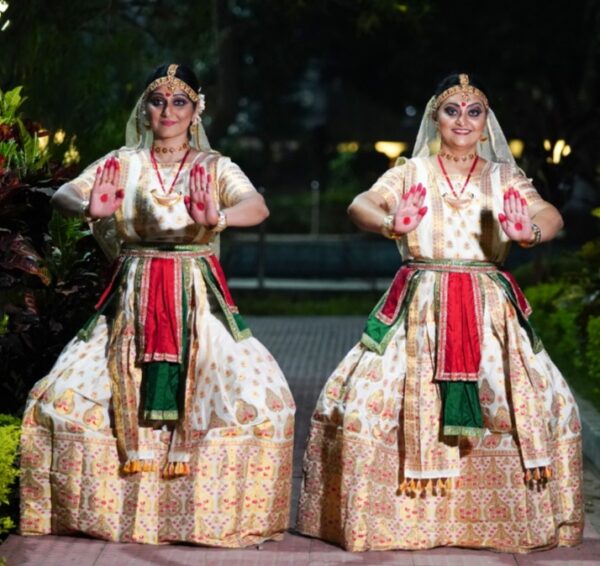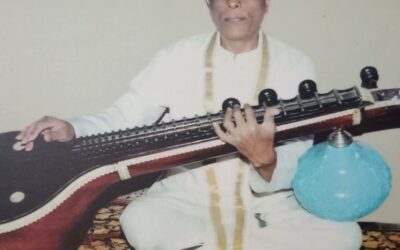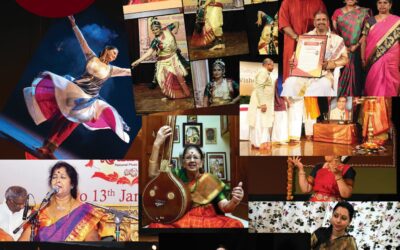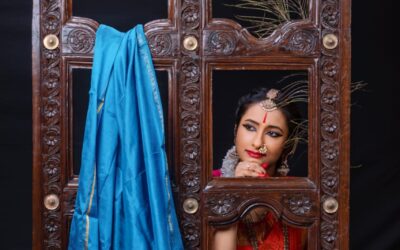Vaishnavism in Sattriya
– Sridevi Jagannath and Rohini Ananth, Disciples of Adhyapak Dipankar Arandhara and Dipjyothi Das
In the 2nd and 3rd century C.E., Vaishnavism was largely rejected and ignored. But, by the 4th century, it was adopted as the royal religion. The Vaishnava literature flourished from then to the 7th century onwards. The period between the 14th and 17th century is very significant as it brought Vaishnavite philosophies to the northern part of India. The teachings of Chaitanya, Vallabha, Mirabai , Kabir, Tulasidas etc., cast aside the heavy burdens of ritual and caste, along with the traditionally subtle complexities of philosophy in favor of the simpler expressions of their overwhelming love for God. The devotional movement in the North was not only centric on Rama and Krishna, but also included their spouses.
The founder of the 8th classical dance Sattriya, Sri Sankaradeva was born in 1449 AD. During that period, Assam was in a state of socio-political chaos. The society’s existence was threatened as the society itself was destroyed from within with no supporting energy from outside forces. Sri Sankaradeva , a poetic genius , created awareness among the common masses against evil practices, and spread integrated religious ideas that gave shape to a set of new values and social synthesis in Assamese society.
The Neo-Vaishnavite movement was initiated by saint Sankaradeva in Assam in the first decade of the 16th century and reached its climax. Sankaradeva propagated his doctrine of Bhakti based on the principle of universal brotherhood to the caste ridden society. While discarding the caste codes, Sankaradeva, gave more emphasis in the matter of personal cleanliness both inward and outward and correct social behaviour for the purpose of establishing social harmony in society and for promoting fellow feeling.
Sankaradeva, to achieve his goal, established a new democratic order through the institution of Namghar, which is considered as the centre of the intellectual and cultural activities of villagers. He introduced some cultural programmes to motivate and educate the common people to accept and practice the religion. He embraced into his fold people of all denomination: the Mikirs, the Mishings, the Garos, the Bhutias and the Bodos as well as a Kayastha, a Kachari, a Chutiya, a Kaivartya, Ahom, a Brahman, a Koch, a Chandal (scavenger), and also people of other faith like Chandsai, a Muslim, who reportedly became a much respected devotee and rose in the ranks.
 Neo- Vaishnavite movement ushered in an era of socio-cultural renaissance in Assam. It encompassed the social, cultural and religious spheres of Assamese society. Even, it developed a new kind of Philosophy, art and music in the form of ‘Borgeets’, ‘Ankiya Nats’or ‘Bhaonas’(a theatre form introduced for the first time by Srimanta Sankaradeva and which became increasingly popular with the masses, centered around themes from the Bhagavata-Purana and the Ramayana) as well as the ‘Sattriya Dance’ as modes of conveying the principles of ‘Ek-Sarana-Nama-Dharma’, based on the devotion to one single God ‘Lord Krishna’ or ‘Vishnu’ based on a spirit of equality and humanism which found concrete manifestation in the institution of the Namghar.
Neo- Vaishnavite movement ushered in an era of socio-cultural renaissance in Assam. It encompassed the social, cultural and religious spheres of Assamese society. Even, it developed a new kind of Philosophy, art and music in the form of ‘Borgeets’, ‘Ankiya Nats’or ‘Bhaonas’(a theatre form introduced for the first time by Srimanta Sankaradeva and which became increasingly popular with the masses, centered around themes from the Bhagavata-Purana and the Ramayana) as well as the ‘Sattriya Dance’ as modes of conveying the principles of ‘Ek-Sarana-Nama-Dharma’, based on the devotion to one single God ‘Lord Krishna’ or ‘Vishnu’ based on a spirit of equality and humanism which found concrete manifestation in the institution of the Namghar.
In the vaishnavism of Sri Sankardeva, one finds that the divine-human relationship is a living relation. God has meant this earth to be the means of man’s spiritual growth. A man has to use his body and the objects he possesses in worshipping God and serving His creatures.
He who sees Vishnu everywhere in the universe attains release even when alive. You should look upon all living creatures as equal to your own self. This indeed is the highest of all means (Bhagavata Purana).
Sankardev instilled these thoughts of inclusivity stressing upon the principles of Upanishad’s teachings thereby highlighting the basic moral code to seek that path to emancipation from all the mundane sufferings. The Bhaonas, Suthradhari dancers of Sattriya propagated these spiritual thoughts of Sankardev through this dance form.
**********



